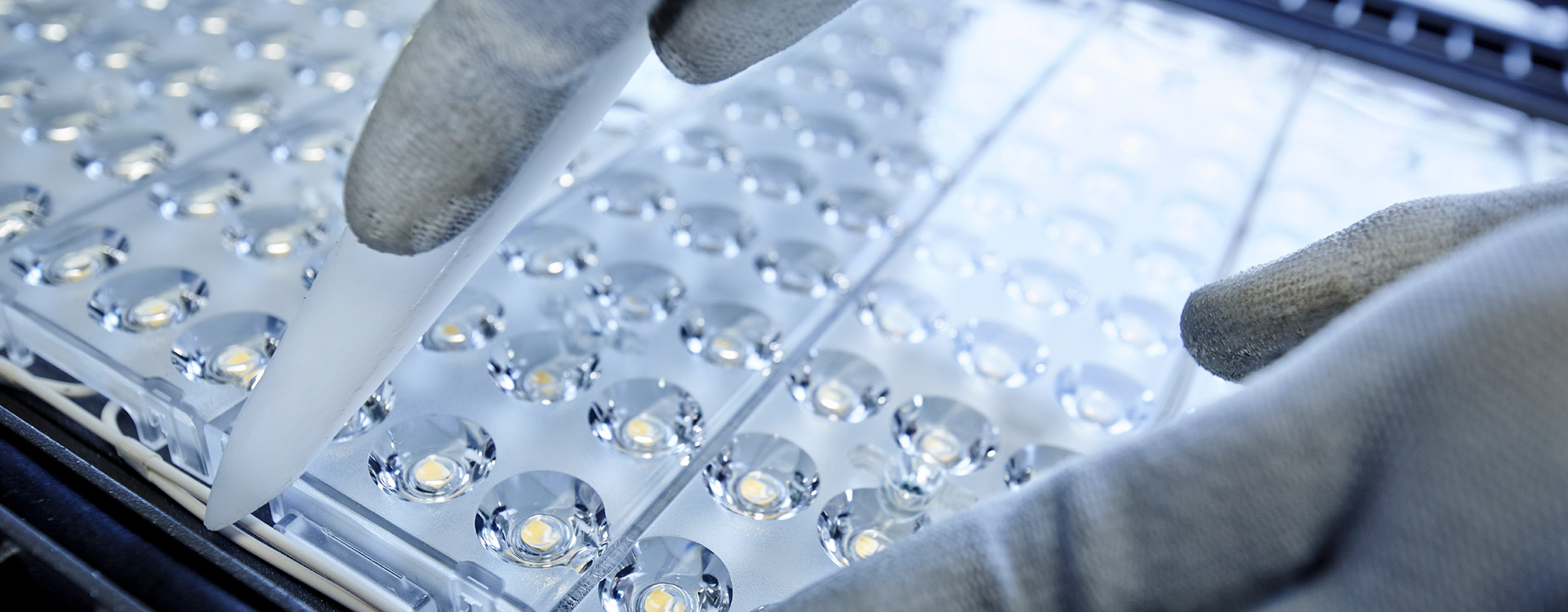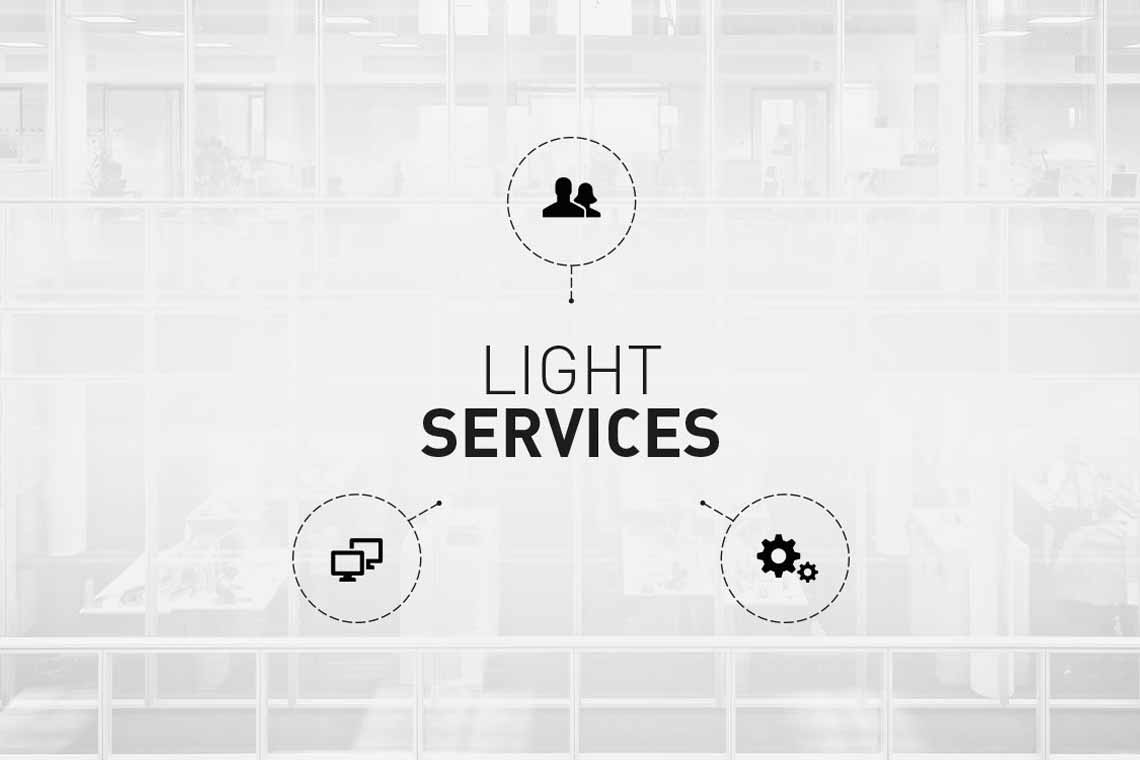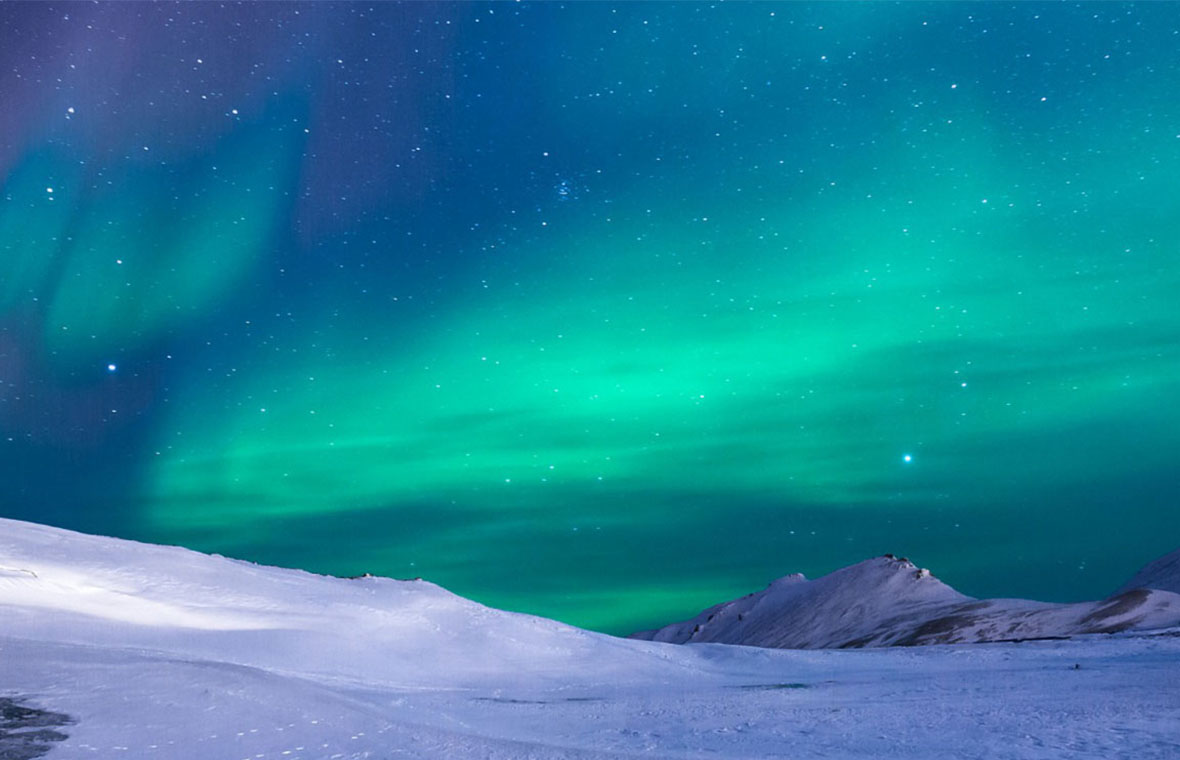LED lighting that convinces!
Never before in the history of artificial lighting have technical innovations led to such far-reaching changes in such a short period of time as with the development of LED technology. In just a few years, it has conquered its place as a light source in all areas of application. At TRILUX, LED luminaires already accounted for well over 90% of total sales in 2020. With the revision of the RoHS Directive in 2023, the gradual abolition of the special regulations on the use of mercury in discharge lamps has been decided for Europe. As a result, practically all discharge lamps will no longer be available in the foreseeable future and will be replaced by LED solutions.
The aim is therefore to provide basic information on LED technology and a uniform understanding of LED lighting in addition to optimized products. A reliable partner for high-quality and efficient lighting solutions offers more than innovative products and a strong brand: Outstanding quality, comprehensive service, committed employees and competent knowledge transfer are just as much a part of TRILUX. All this makes TRILUX a strong and reliable partner for you and your lighting ideas. Today and in the future.
Energy efficiency mandatory
The most important aspect for the rapid development and spread of LEDs is almost certainly their enormous energy efficiency. - It was recognized very early on that luminous efficacies of more than 100 lm/W would soon be achieved. - The luminous efficacy of today's LED luminaires is up to 180 lm/W. - In the medium term, luminous efficacies of more than 200 lm/W can be expected for LED luminaires. A relative savings potential of a factor of 10 with LEDs compared to frosted general-purpose incandescent lamps (<10 lm/W) and at least a factor of 3 compared to halogen incandescent lamps (up to 30 lm/W) suggests a gradual ban on these conventional light sources. There is great potential for savings in technical lighting, i.e. the lighting of workplaces, educational establishments, healthcare facilities, salesrooms and other public facilities as well as the lighting of all outdoor areas.
High lighting requirements and long operating times result in high energy requirements for lighting, which can be significantly reduced through the targeted use of efficient luminaires and their user-oriented control by means of electronic lighting management. The basic prerequisite for this is a professional lighting design process across all technical interfaces, which maps all requirements for the lighting solution. Practical experience shows that with a good LED lighting system, energy requirements can often be reduced by a factor of 3 compared to fluorescent lamps, and with additional lighting management often by a factor of 5, i.e. to 20% or less. It has been proven that the energy costs saved alone justify the refurbishment of a lighting system.
FAQ: LED lighting
Temperature, luminous efficacy and service life
One of the most important factors for the performance and service life of an LED is the temperature in the junction - the so-called junction temperature Tj. As the temperature rises, the luminous efficacy and service life of an LED decrease. Thermal management therefore plays a central role.
Drop in luminous flux and total failure
When considering the service life of an LED, a distinction is made between parametric faults, i.e. a reduction in luminous flux (degradation) and total failure, which is independent of this. For technological reasons, the luminous flux of LEDs decreases over time until it falls below an acceptable threshold value for the respective area of application. The reduction in luminous flux of LED luminaires must be taken into account when planning the lighting system. The average rated service life Lx is generally used as a guide, where "L" indicates the number of operating hours within which the luminous flux is expected to fall to a predetermined minimum percentage value of "x". In the case of high-quality LED luminaires, the total failure is negligible within the time frame of the service life, meaning that it is irrelevant in planning.
Efficient thermal management
Despite the enormous efficiency of LEDs, which convert around 60% of the electrical energy supplied into visible light, the heat generated by the remaining 40% of electrical losses still places high demands on reliable thermal management. The heat generated in the almost point-like small volume of the LED crystal must be dissipated continuously and reliably so that no heat build-up occurs even in continuous operation and the service life of the thermally sensitive semiconductor is not impaired. The adequate design of the construction and precise production processes are therefore basic prerequisites for being able to offer a high-quality product.
White light, warm light?
If you compare the light from different light sources, you will notice major differences. Candlelight is perceived as warm light, while the light from a fluorescent tube appears colder. Both light sources are so-called white light sources and emit a broad spectrum of different wavelengths. The ratio of the different spectral components determines the perceived light color, warm white with increased red components and cool white with increased blue components.
LED - A luminescent spotlight
The light emitted by a light-emitting diode is not the small, visible portion of its temperature radiation, as is the case with an incandescent lamp - it is instead generated by the recombination of positive and negative charge carriers in the junction layer of the semiconductor. A large proportion of the energy released is emitted as electromagnetic radiation in the visible range - i.e. as light. The efficiency of the LED exceeds that of an incandescent lamp many times over. Around 60 % of the electrical energy used is converted into light by a light-emitting diode.
LED components
At first sight an LED assembly consists of a series of simple components. The central element is the actual LED (light emitting diode), a specially doped semiconductor that transforms the electrical energy into visible light. This process takes place in a very narrow area in the centre of the semiconductor, the so-called junction area or junction. The LED itself features two electrical connections and can be fixed onto a thermally conducting carrier material to dissipate the heat occurring during operation. These components are protected by a robust housing that is covered above, i.e. in the radiation direction, by a primary optical system (usually a small lens).
Coloured light
If the spectral composition of the light from various light sources is compared then major differences are seen. Candlelight for example contains an above average red component and is perceived as warm light, whereas the light from a fluorescent tube has a higher blue component and appears cooler. As most natural light sources emit a wide spectrum of various wavelengths, specification of a single wavelength is not suitable for characterising white light. More decisive is the ratio of the various spectral components. These specify the colour temperature with white light or the colour of coloured light.
Efficiency of LED
The light emitted from a diode is not the by-product of a thermal process as with incandescent lamps but is generated as part of an electrical reaction within the diode, with recombination of positive and negative charge carriers in the junction area of the semiconductor. The energy released is emitted as electromagnetic radiation in the visible range, meaning in the form of light. The efficiency of LEDs exceeds that of an incandescent lamp many times over. Around 50 % of electrical energy input is transformed by LEDs into light.
We all know the invigorating effect of light. It perks us up and activates us. It regulates our daily routines. Current studies confirm the positive effect of sunlight on health and the psyche. However, artificial light has also been proven to increase people's sense of well-being, promote concentration and have a stimulating effect. Based on sunlight, artificial light has therefore long been more than just a means to an end.
With the latest technology, intelligent lighting solutions and experience, our aim is to always achieve the best possible lighting quality. In short: new light that helps shape architecture, makes people work better, arouses positive feelings - and is highly efficient at the same time.
Illumination with LED
The perfect luminaire alone is not enough for us. Because the right light depends on the whole: an optimal, balanced lighting design. Whether in individual rooms, in entire building complexes or in outdoor areas: Our individual advice and planning assistance is your key to holistic lighting solutions that save energy and therefore costs. Because we are more than just a supplier. We are a competent partner for all your questions about lighting.
Thinking and acting for the long term has always been a fundamental part of our self-image. Our aim is to offer sustainable and energy-saving products and to manufacture them in a responsible manner with resources such as raw materials and energy. Thanks to LED technology in particular, our products are reaching dimensions in terms of cost-effectiveness, environmental compatibility and energy efficiency that were considered impossible just a few years ago.




